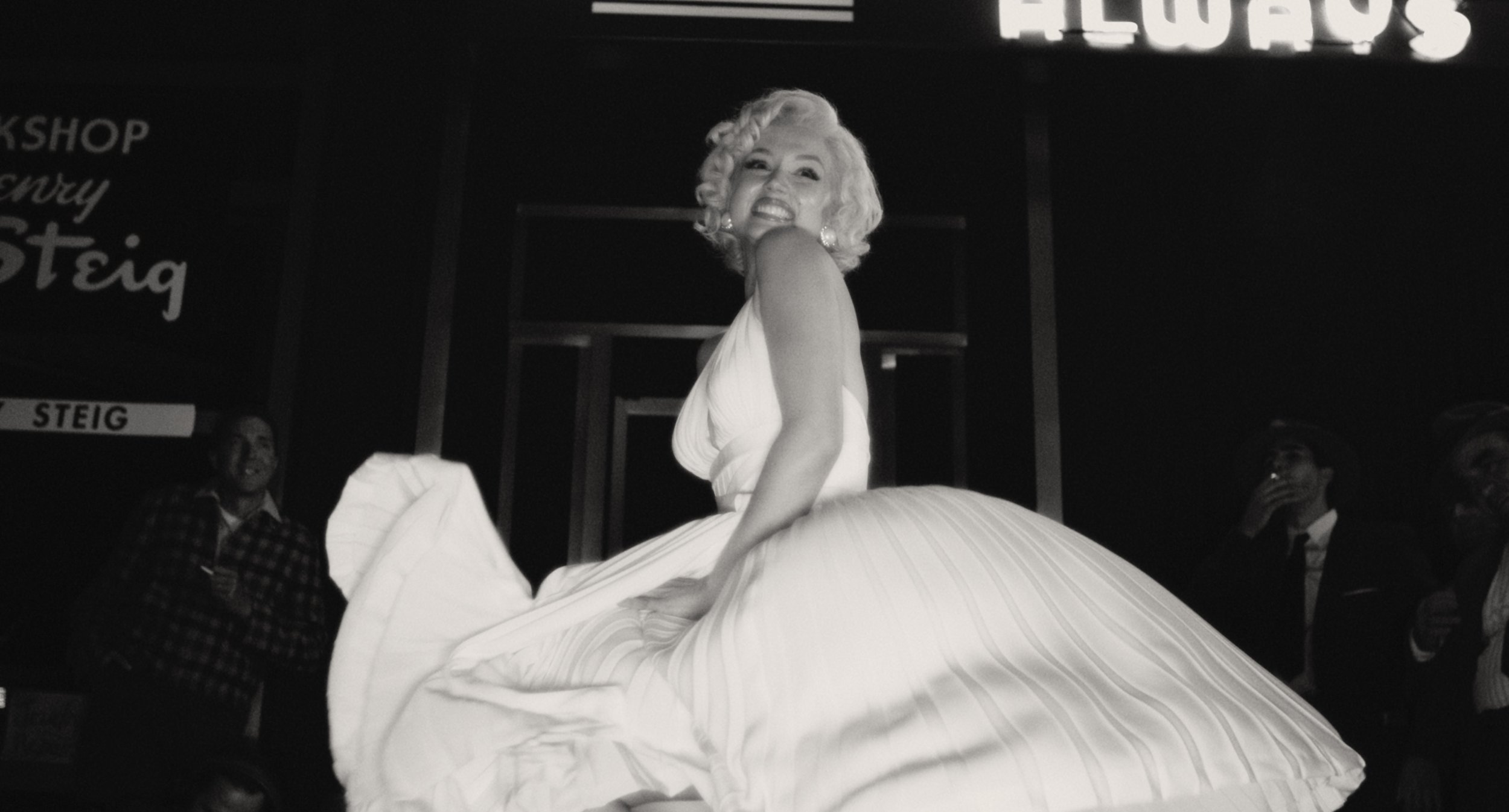Review: 'Blonde' is an artfully done but cruel recounting of the worst parts of Marilyn Monroe's tragic life
In the 60 years since her death at age 36, Marilyn Monroe and her mystique have been analyzed, dissected and commented upon by pretty much everyone who has ever watched a movie — and, as director Andrew Dominik’s fictionalized take, “Blonde,” shows us, we remain no closer to understanding what made her tick.
Dominik’s lushly constructed but cruelly staged biopic is only about a few sides of her life. It’s never about Monroe as human being, or as artist. It’s only about Monroe as object of other people’s desires, and as victim of those people’s whims.
Cribbing from parts of Joyce Carol Oates’ doorstop of a novel, Dominik (who directed and wrote the screenplay) begins with a painful prologue shows Norma Jeane Baker (played as a girl by Lily Fisher) suffering at the hands of her unbalanced mother, Gladys (Julianne Nicholson), who talks about Norma’s never-seen father, someone so famous his name can never be mentioned — and someone, in Gladys’ delusional state, she thinks will someday return. Ultimately, Gladys ends up in a sanitarium and Norma Jeane in an orphanage.
Fast forward, and Norma Jeane — played as an adult by Ana de Armas — launches a modeling career, on shoots mostly for advertising but a few for skin mags. Her agent (Dan Butler) gets her an opportunity for a contract with 20th Century Fox, but she soon learns the price is being raped by the studio chief, Mr. Z (David Warshofsky). (Following Oates’ novel, the main men in Norma Jeane’s life are not identified by name in Dominik’s script — though occasionally, as with Daryl F. Zanuck, he lets a bold-face name slip.)
Norma Jeane’s early career shows promise, but her private life — a three-way relationship with Charlie Chaplin Jr. (Xavier Samuel) and Edward G. Robinson Jr. (Evan Williams), scions of Hollywood royalty — draws a warning from her agent and Mr. Z., to stay out of the scandal sheets.
Norma Jeane finds a more publicly acceptable romance with the ex-athlete — Bobby Cannavale as the recently retired baseball legend Joe DiMaggio — that seems picture-perfect. She even calls him “Daddy” in private. Dominik depicts the ex-athlete as physically abusive and possessive, particularly showing his rage when Marilyn shoots her iconic scene from “The Seven-Year Itch,” as paparazzi leeringly capture her billowing dress.
As Marilyn tries to show her seriousness, taking acting workshops in New York — which is where she meets “the playwright” (Adrien Brody, channeling Arthur Miller well). Happiness for Marilyn, again, seems just out of reach.
In the later scenes of the film, there’s another man put in the picture, identified as “the president” (played by Caspar Phillipson). This is where Dominik indulges in the most lurid tabloid speculation about Marilyn and JFK. It’s also where the movie — by focusing tightly on de Armas’ face as she simulates oral sex — that the movie earns its NC-17 rating.
Dominik, beloved by cinephiles for his mournful Western “The Assassination of the Outlaw Jesse James by the Coward Robert Ford,” shoots mostly in black-and-white with some passages in color. Much of his technical prowess is deployed in matching de Armas into classic movie scenes (pairing her with George Sanders in “All About Eve” and Tony Curtis in “Some Like It Hot”) or re-enacting famous photos of the star.
For every moment of grace and elegance, there are shots like the one where the point of view is from inside Marilyn’s vagina as a speculum is inserted to begin an abortion procedure. (This happens in two different parts of the film.) Or there’s the shot from inside an airplane toilet, as Marilyn vomits on the lens.
What, exactly, is the point of “Blonde” — besides letting de Armas pull off a fearless, frequently topless performance as the much-tormented Norma Jeane? It’s hard to divine Dominik’s motives. But the end product serves to drag the image, the persona, of Marilyn Monroe, and the person of Norma Jeane Baker, through all the slime and innuendo that dogged her in life. Any moviegoer with a heart will wince throughout “Blonde,” and wonder why we all can’t leave Norma Jeane to rest In peace.
——
‘Blonde’
★★
Starts streaming Wednesday, September 28, on Netflix. Rated NC-17 for some sexual content. Running time: 166 minutes.







